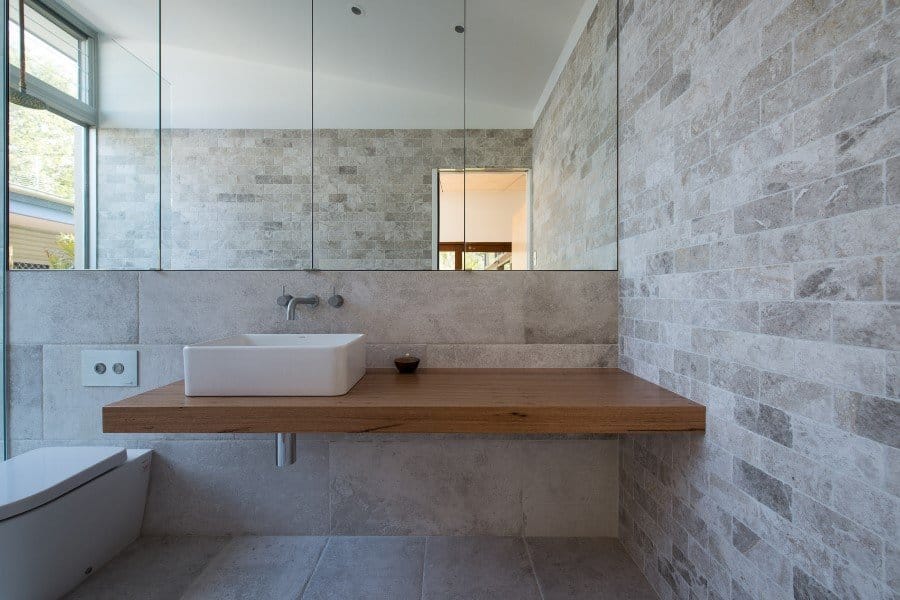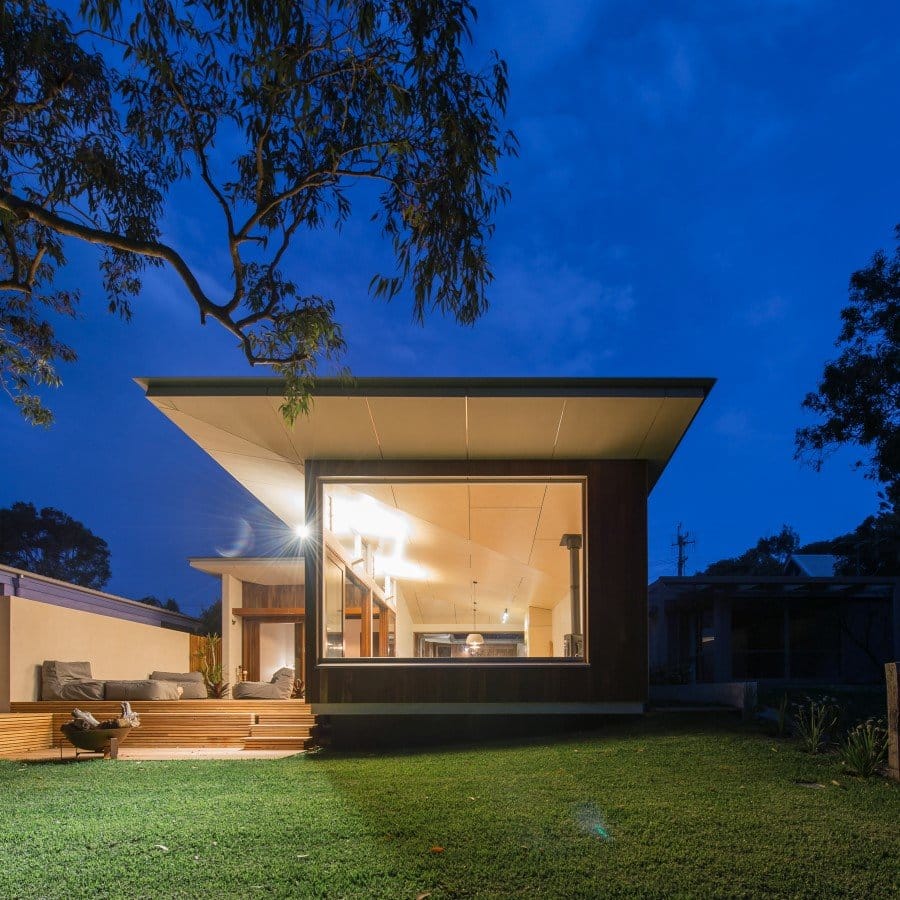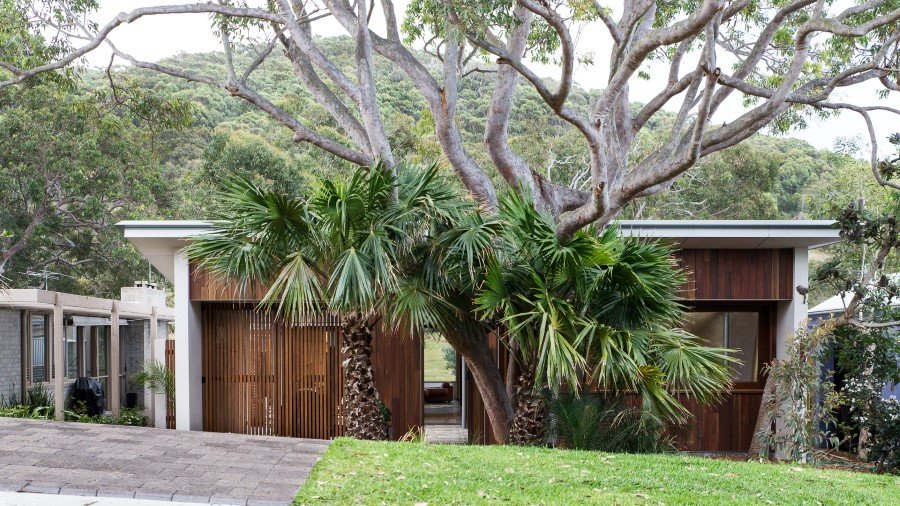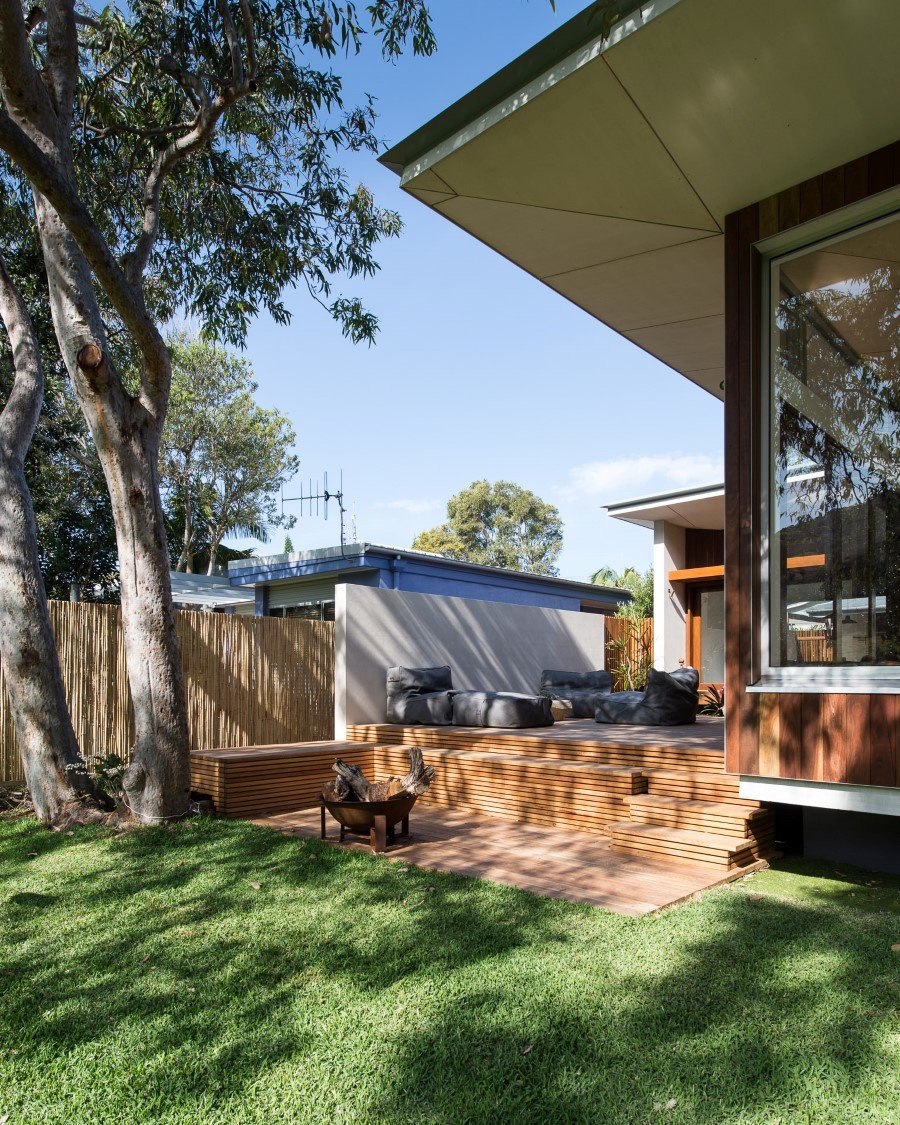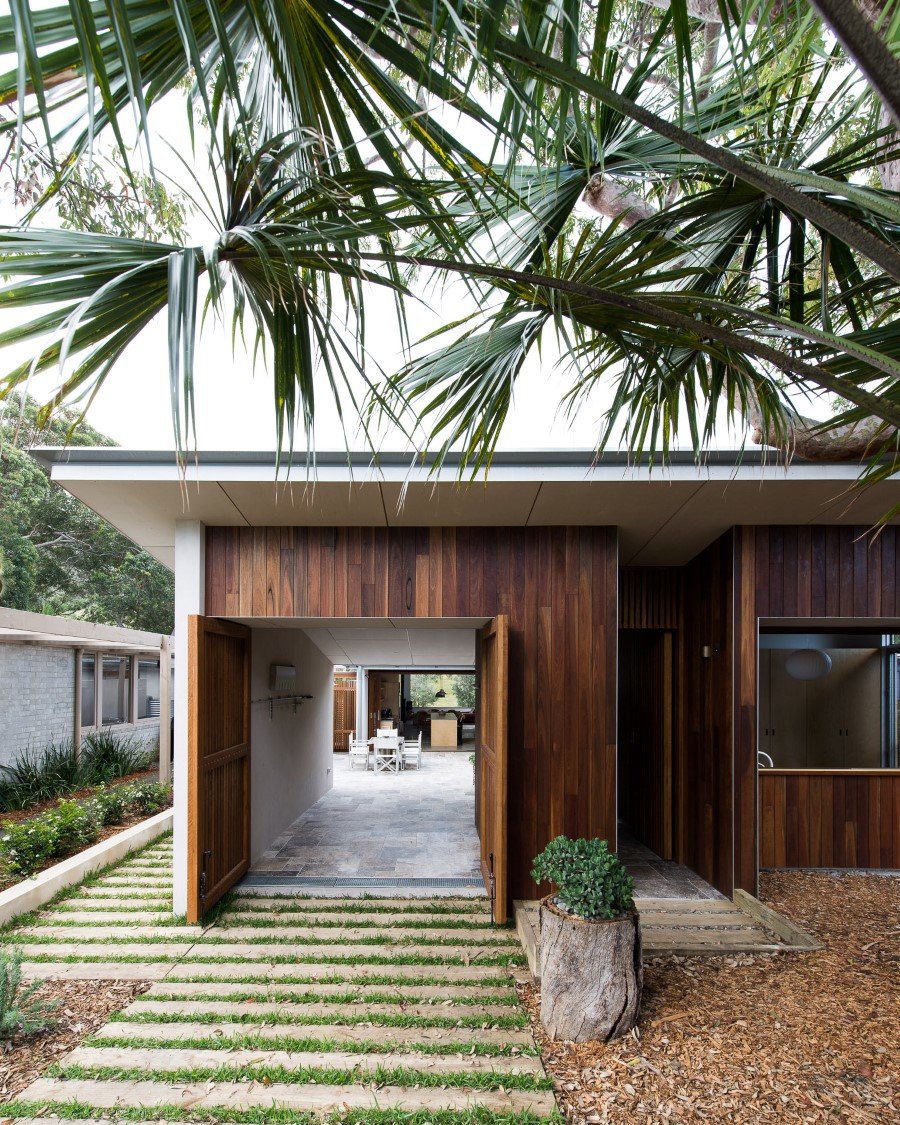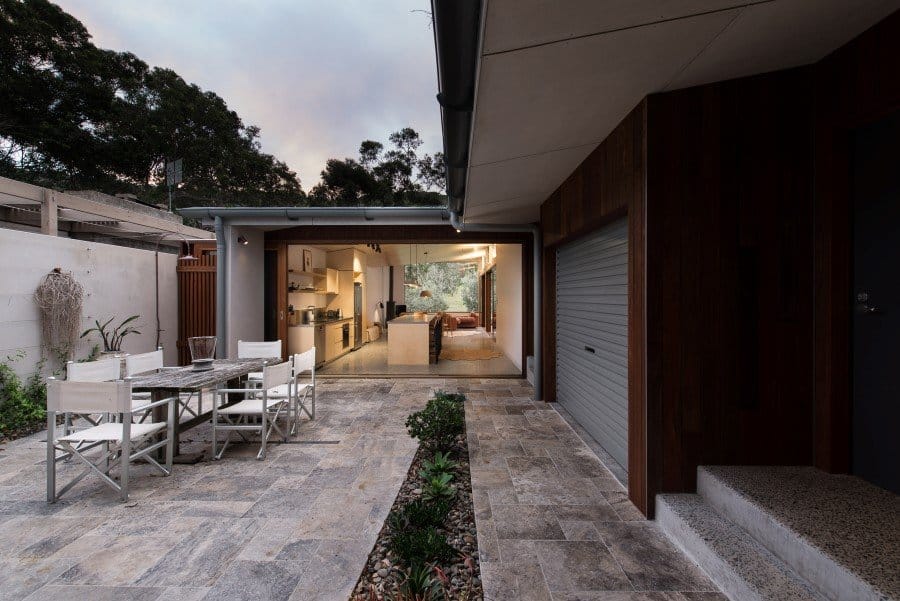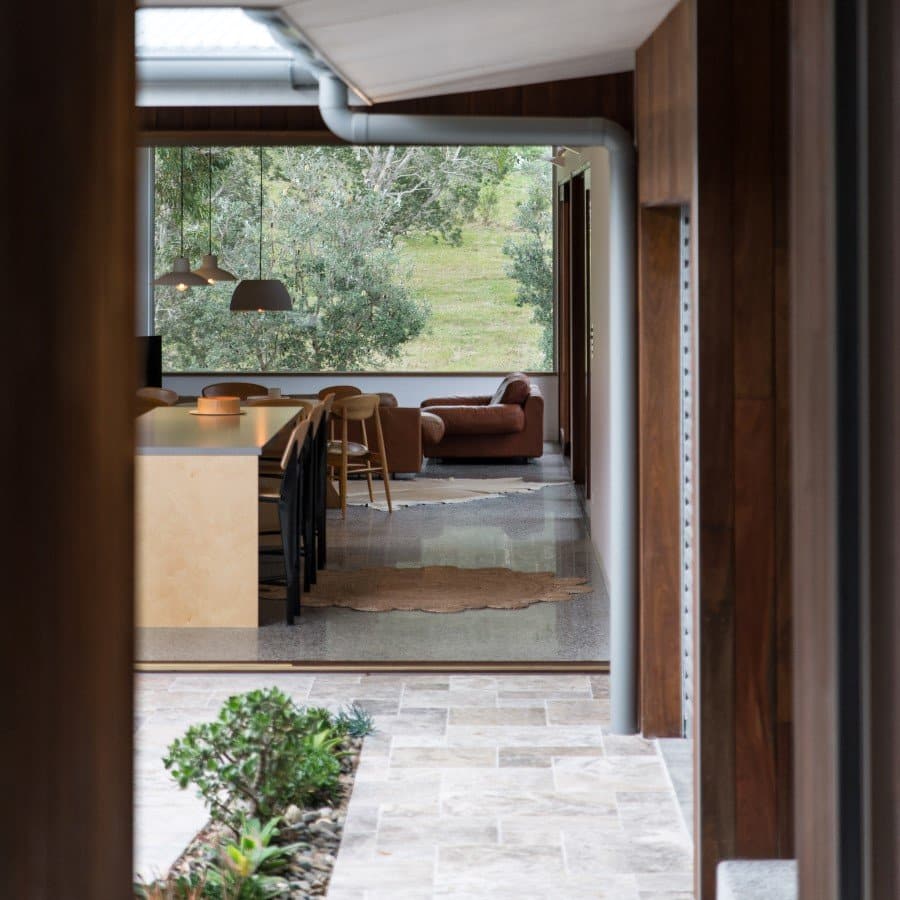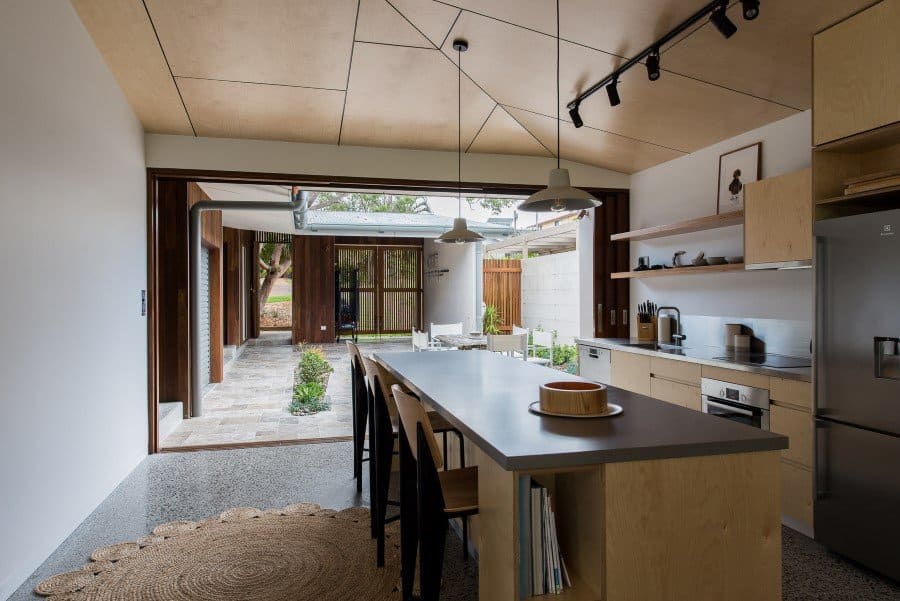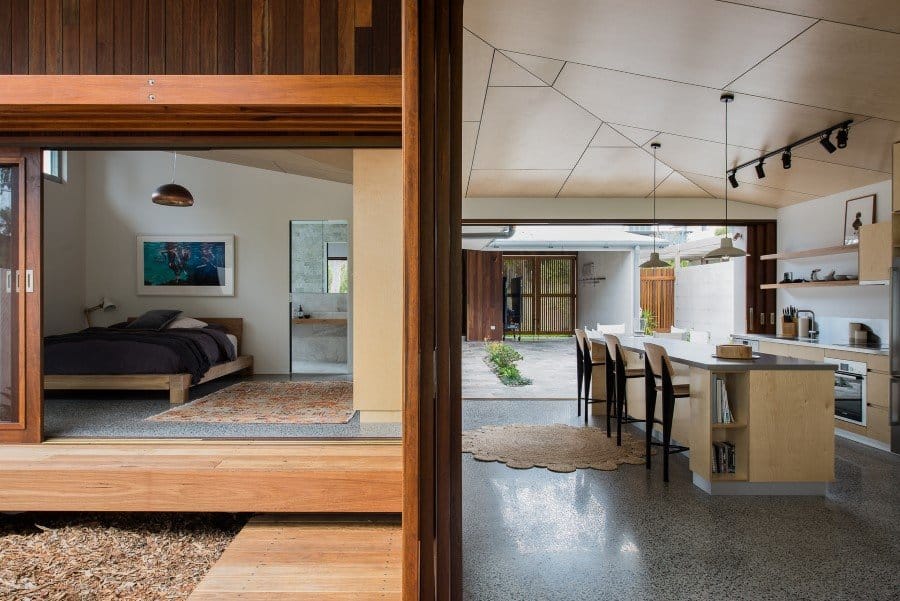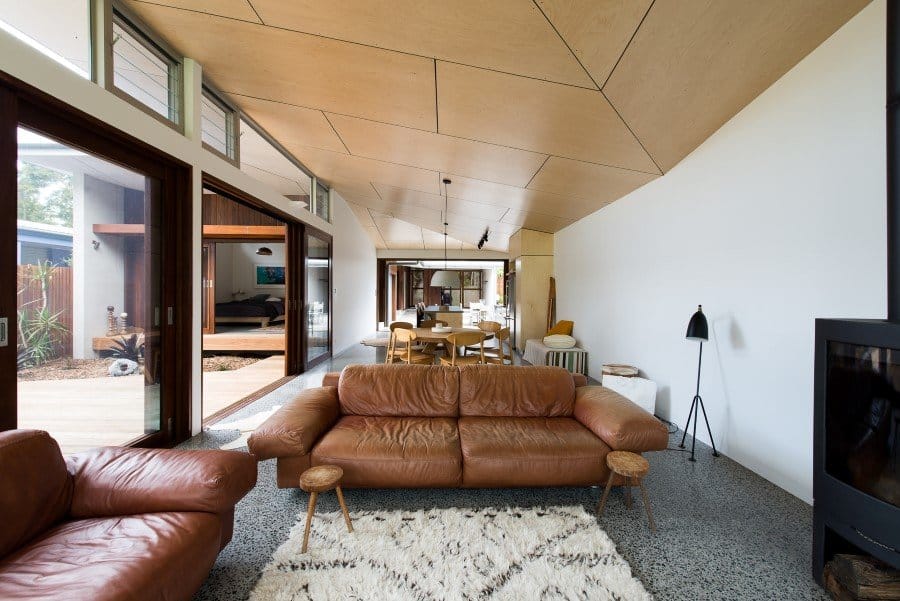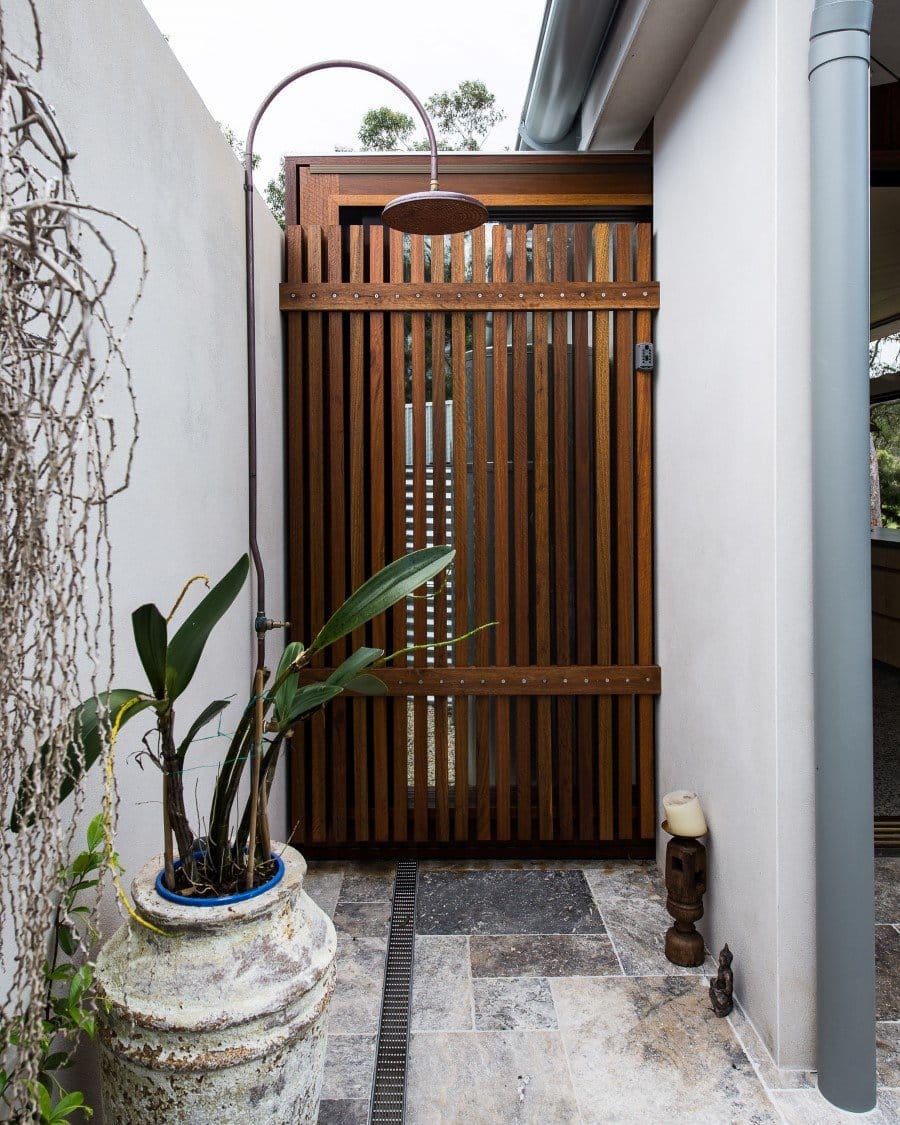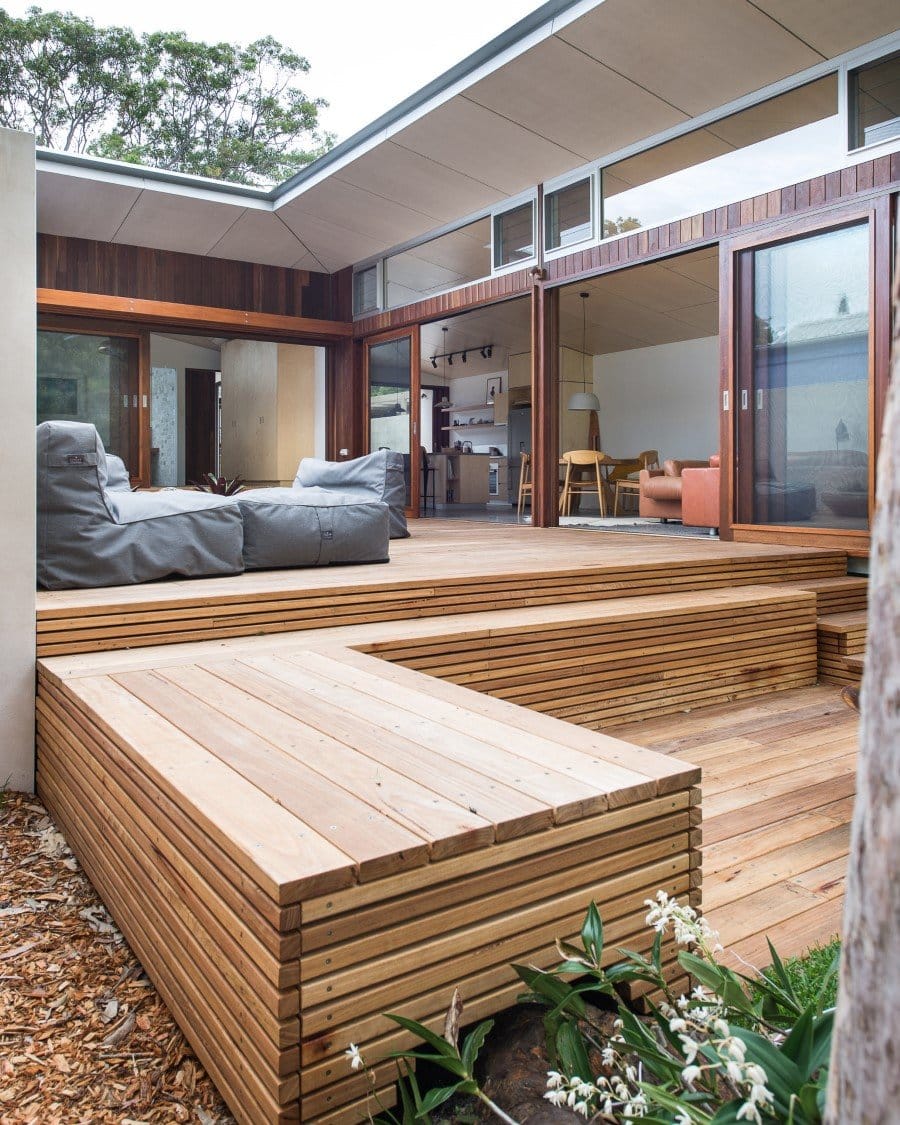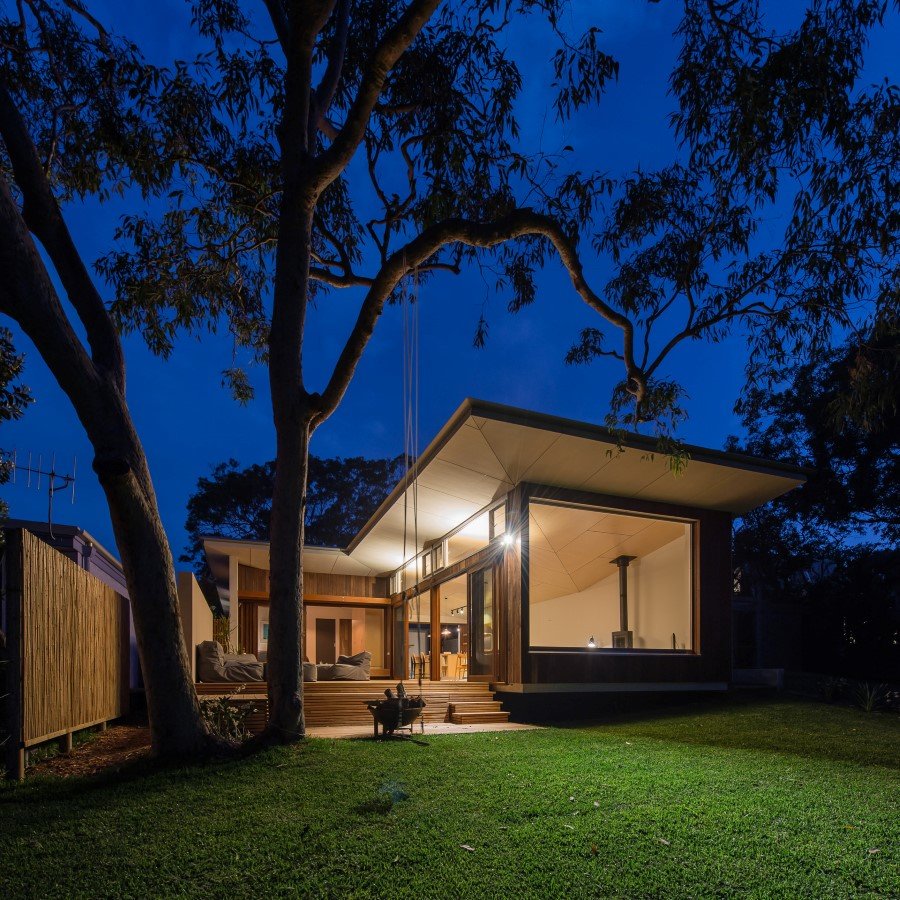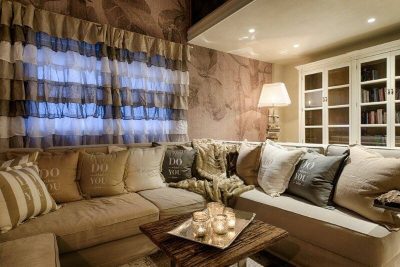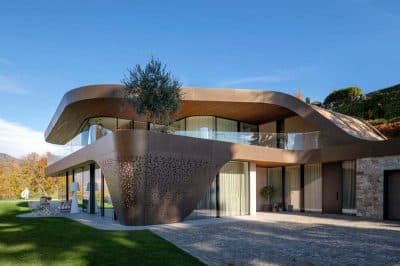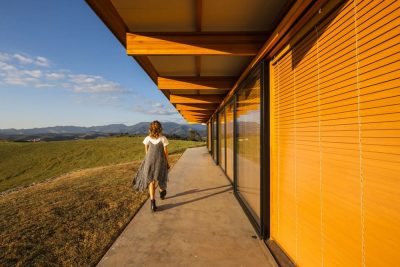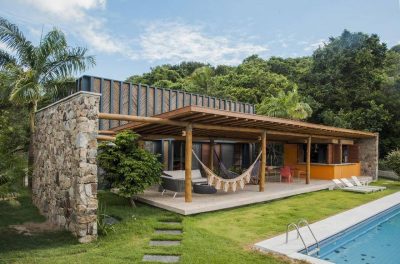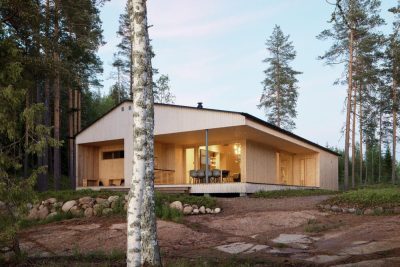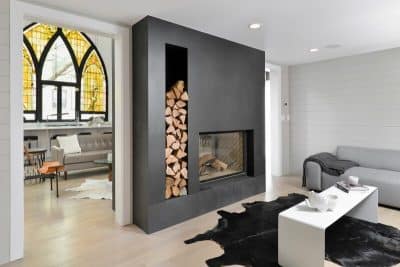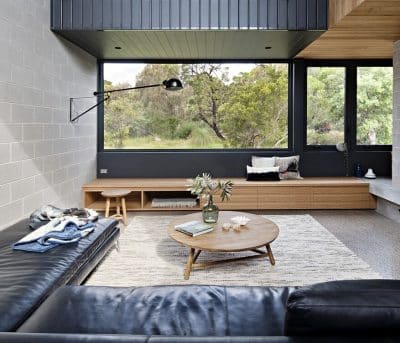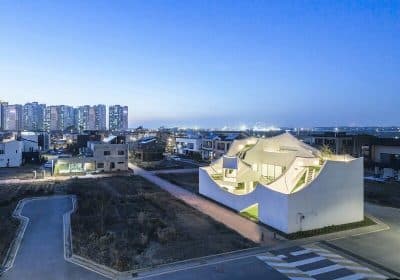The Blueys Beach Vacation House, designed by Bourne Blue Architecture in 2015, is a single-family holiday house located in the popular coastal destination of Blueys Beach on the Mid North Coast of New South Wales, Australia. This project aims to maintain the area’s traditional beach holiday experience while providing modern, sustainable living.
Design Concept
Blueys Beach’s original houses are simple fibro or weatherboard structures, often weather-beaten but exuding a relaxed beach holiday vibe. However, recent developments tend to replace these charming homes with large suburban houses that lack context and place recognition. The Blueys Beach Vacation House was designed on a narrow (12m x 42m) block, featuring a large Angophera tree and some Cabbage palms at the front and another large Angophera at the rear. The gently sloping site overlooks grassland and forested hills.
Client Brief
The client requested a simple holiday house that retained the Angopheras and maximized the views to the rear. The house needed to be unostentatious and fit well within the context of the village. The design includes easy transitions from the beach to the house, with hardy surfaces for durability. The living spaces open seamlessly to the sunny deck or shady courtyard, and the carport doubles as a roofed outdoor area for dining or games.
Design and Layout
The challenge was to ensure privacy while maintaining strong connections to external spaces. The building consists of two main elements: one for sleeping and one for living. A zigzagging roof form unites these elements into a cohesive whole. The adjacent spaces form courtyards and decks for outdoor living.
To minimize the house’s bulk when viewed from the street, the structure steps with the land. Much of the living space is outside the buildings, in the courtyard or on decks, reflecting the indoor/outdoor lifestyle of the area. Materials used relate to the village context, are economical, and corrosion-resistant. Timber is extensively used, with polished concrete floors internally and stone externally. Eaves are made of fiber cement.
Sustainable Features
Sustainability was a key consideration in the design:
- High-performance glass on all doors and windows
- Correctly oriented thermal mass
- Heavy insulation in walls and ceilings
- Rainwater harvesting for toilets, laundry, and garden use
- Minimal footprint, using fewer materials and resources
- Sustainable timber use, including reconstituted timber for concealed structures, birch plywood linings and joinery, and sustainably forested cladding
- Heat pump hot water technology
Conclusion
The Blueys Beach Vacation House by Bourne Blue Architecture successfully blends modern design with the relaxed, traditional beach holiday atmosphere of Blueys Beach. Through careful consideration of the natural environment and sustainable building practices, the house provides a harmonious and durable retreat for its residents.
